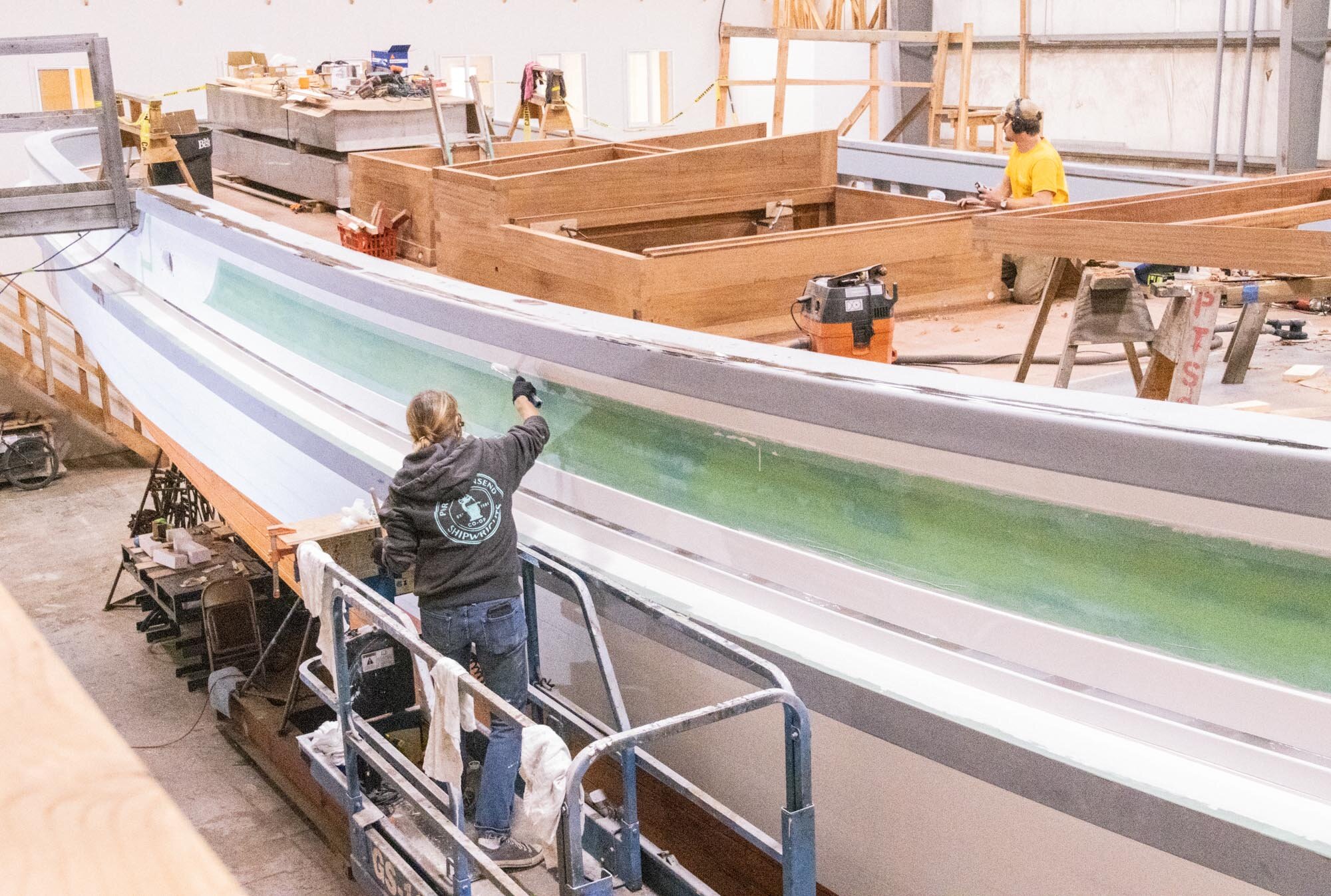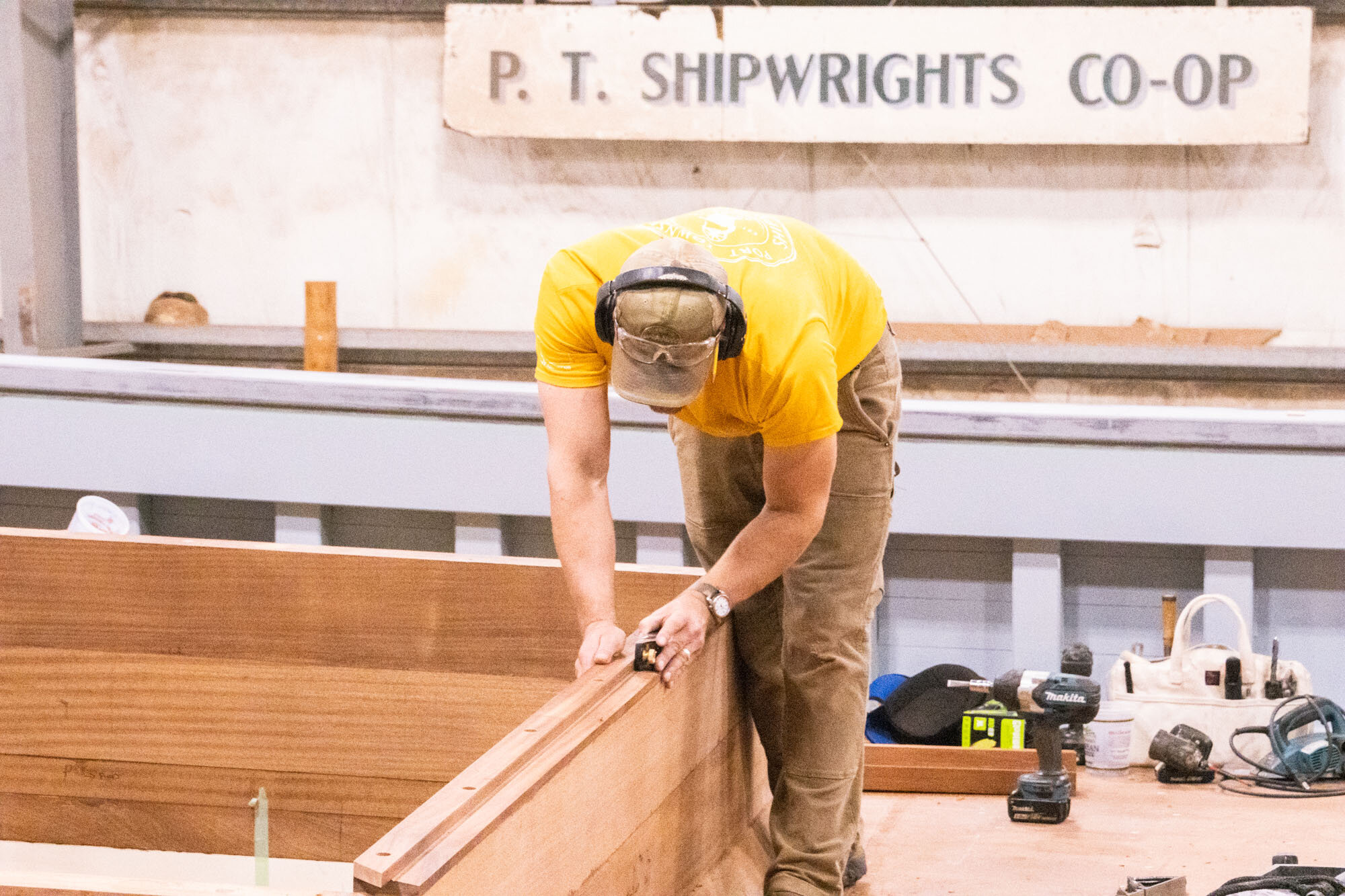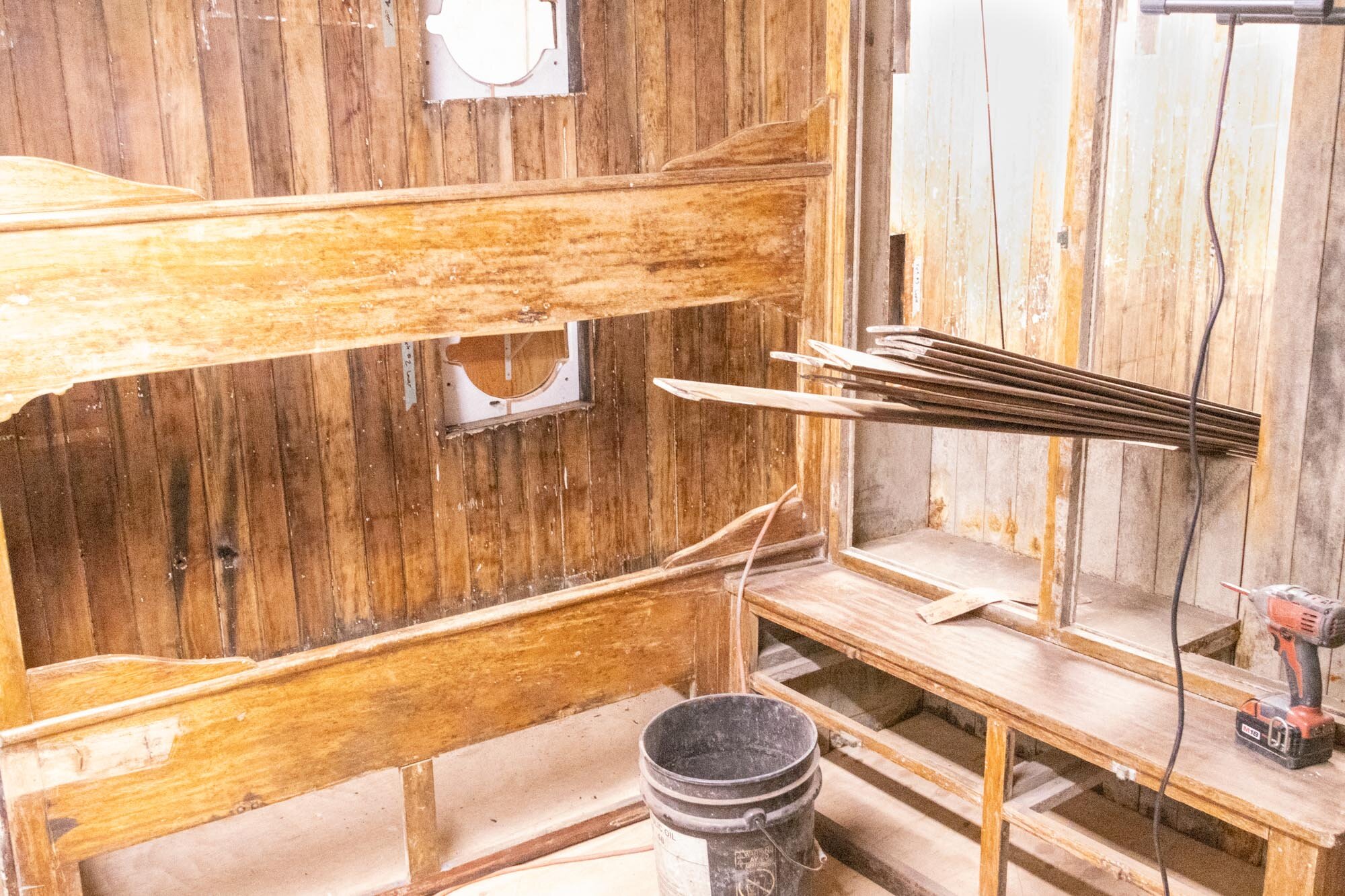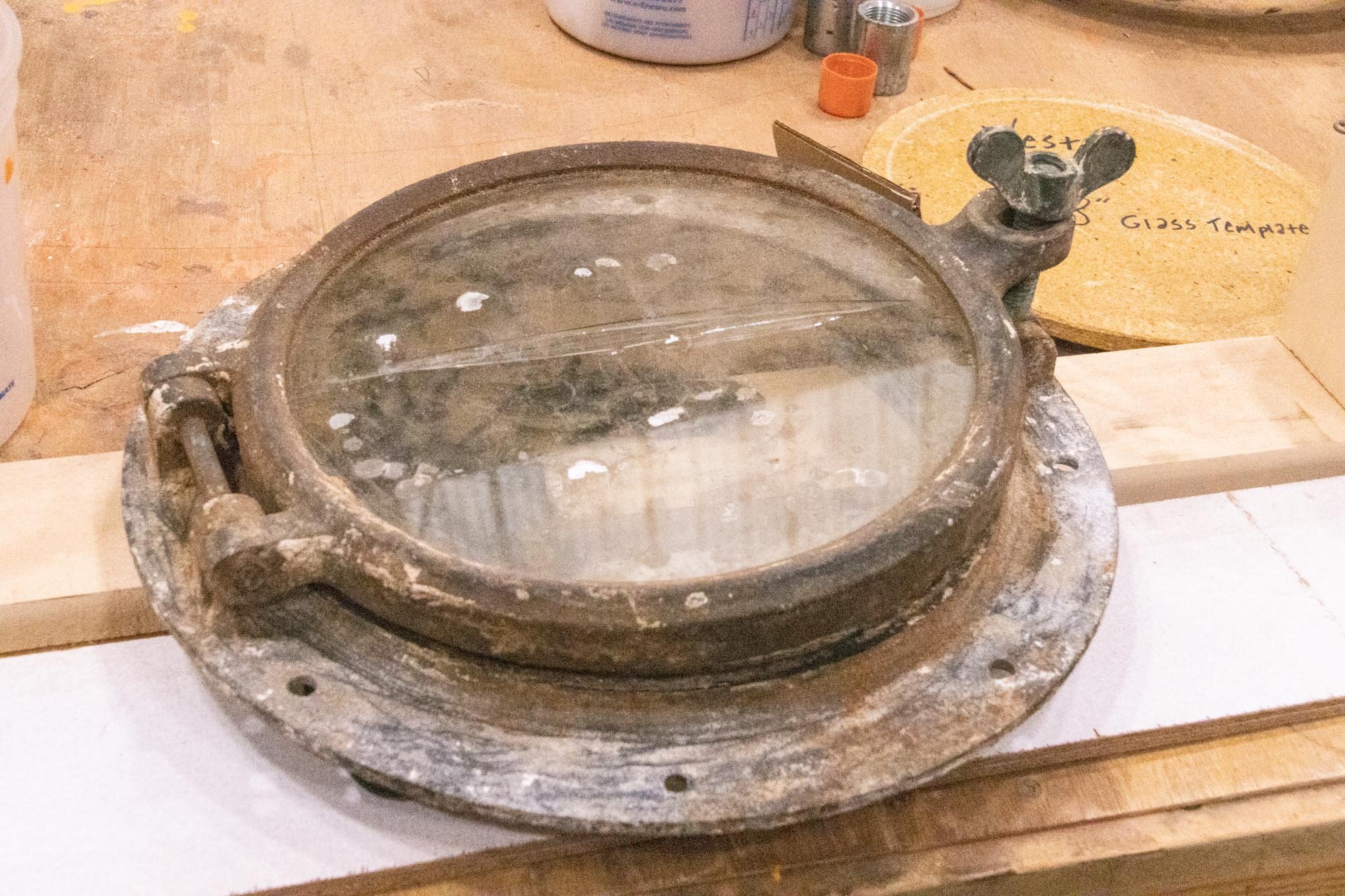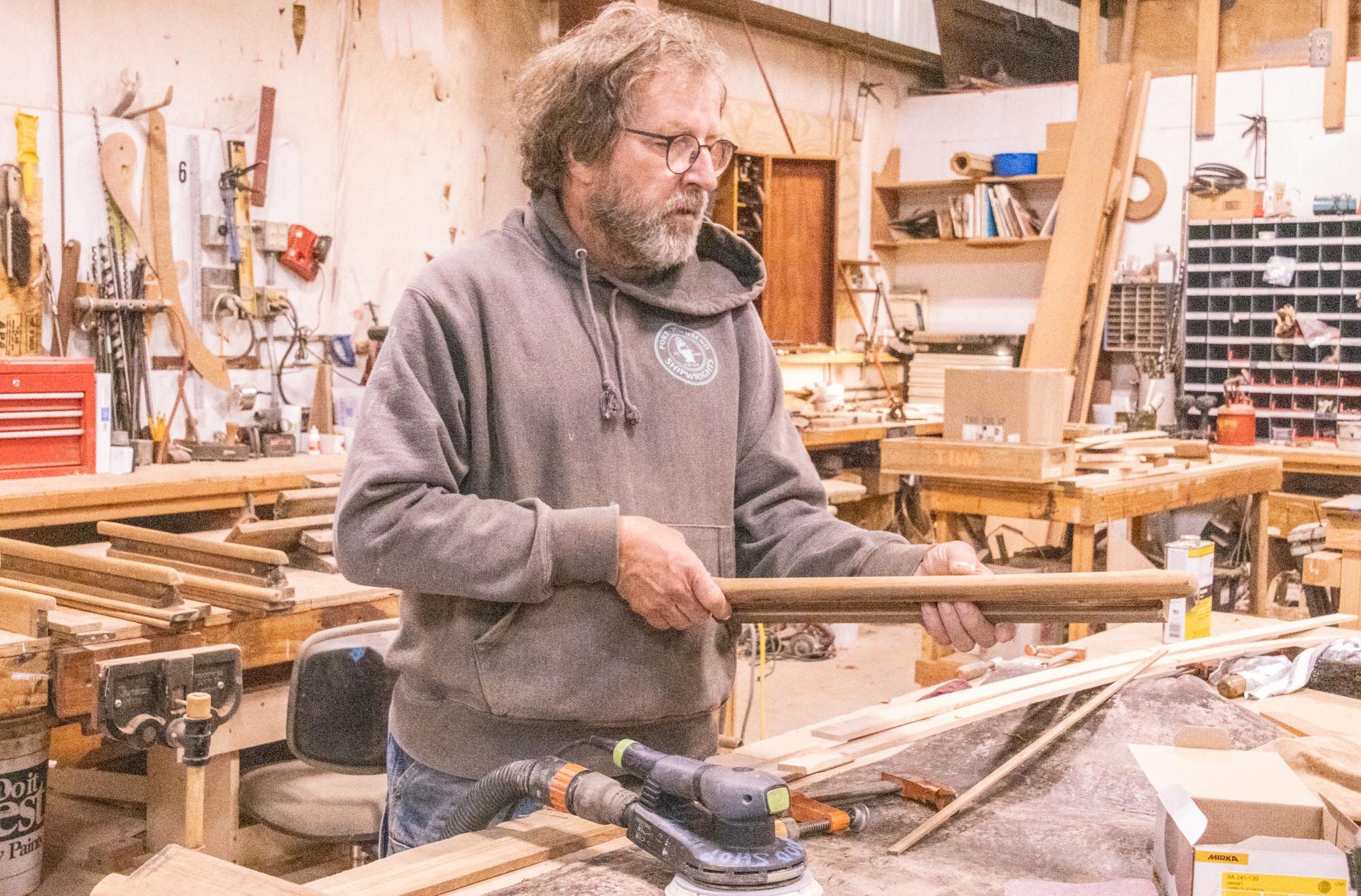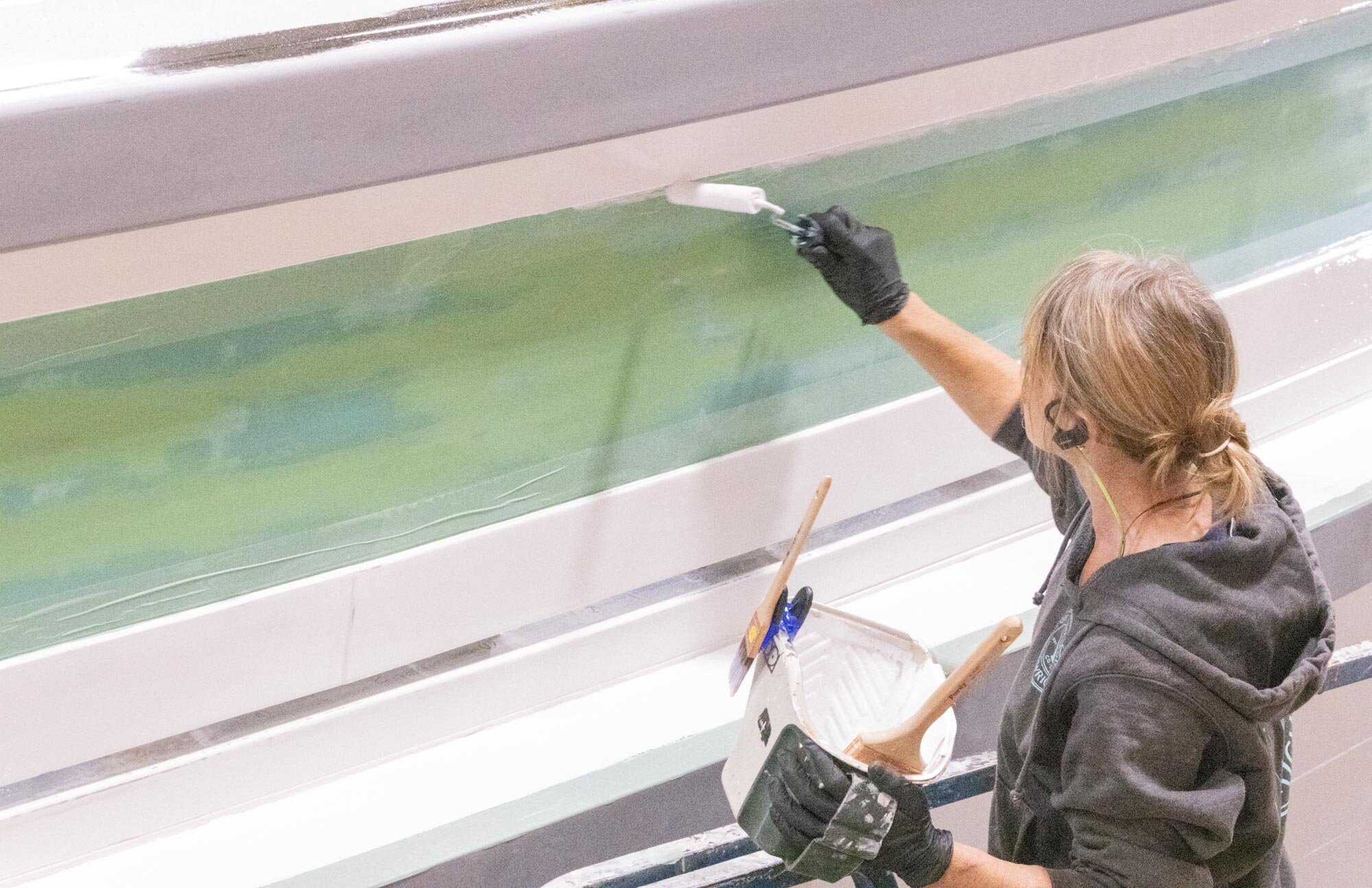Western Flyer - A Boat of Many Lives
Just before reaching Water Street coming into Port Townsend, you pass Boat Haven on your right, a full service marina that supplies both guest and permanent moorage. It is also home to more than sixty marine trades businesses providing services including boat maintenance, brokers, building and repair, among many others.
While my friend Kathy and I were eating breakfast at the Blue Moon Café, just inside the Boat Haven’s entrance, a young man wearing a funny t-shirt passed by while we were eating breakfast. The t-shirt had a hot dog printed on it, and it said, “Relish Today, Ketchup Tomorrow”. I was amused by the t-shirt, and the man and I started a conversation about his work at Boat Haven. He told me he was working on the Western Flyer, the boat that John Steinbeck had leased for his famous trip to the Sea of Cortez. He gave me the name of the person to contact about taking photos, and the rest is history.
Susan escorted us into the Port Townsend Shipwright’s Co-op and ultimately into the room with the Western Flyer. The boat’s 77 feet almost filled its entire inside space. Standing so close to it, the boat felt overwhelmingly large. It is not only physically large, but it holds a large space in literary history. We had free access to the area outside the boat, inside the wheelhouse and the workroom where the detailed woodworking is created that ultimately dresses the Flyer.
Sleeping quarters in the wheelhouse
The Western Flyer was built in 1937 by the Western Boat Building Company in Tacoma, Washington. In 1940 John Steinbeck and his marine biologist friend Ed Rickets leased the Western Flyer for six weeks for a 4000-mile research trip to the Sea of Cortez, located between Mexico’s western mainland and the Baha Peninsula. The purpose of the trip was to collect marine specimens from coastal rocks and tide pools to research the ecosystems and document their findings. They were studying the relationship between single organisms and the larger ecosystems including the damage to the environment caused by humans. The Log From the Sea of Cortez was the result of his and Rickets’ journey, a highly influential book described by Smithsonian Magazine as “a high-spirited blend of adventure travel writing, marine science and freewheeling philosophy, shot through with a marvelous sense of wonder at the interconnectedness of the world”.
Porthole after recovery
The Flyer had some challenging years after Steinbeck and Rickets ended their project. It went back to the purpose for which it was originally constructed, carrying tens of thousands of pounds of fish in the Pacific Ocean for many years from Alaska to British Columbia and up and down the west coast of the US. The boat had several owners, including one that changed its name to Gemini in recognition of the NASA space missions. In 1971 it was grounded in Southeast Alaska and was almost lost. In the mid-1980’s it sank near Anacortes, Washington. In 2012 it sank again, then one more time in 2013 under the Twin Bridges in the Swinomish Channel in Washington State. It sat submerged for six months before the Department of Natural Resources raised it and delivered it to its current location in Port Townsend.
In 2015 it was purchased for $1 million by John Gregg, a marine scientist, who plans on using it for marine research as a floating classroom. Gregg was inspired as a child by The Log From the Sea of Cortez and has had a life-long interest in Steinbeck and Rickets. He saved the boat from becoming part of a hotel restaurant in Steinbeck’s hometown of Salinas, California. Gregg heads up the Western Flyer Foundation which continues to raise money for the boat’s restoration. Gregg hired Chris Chase to manage the restoring of the boat. Chase had previously been one of the owners of the Port Townsend Shipwright’s Coop but gave that up to manage this once in a lifetime project. “Call it her spirit or whatever you think a boat has that gives it a life force, but she didn’t want to die there in the mud”, Chase was quoted in the Filson Company blog, which of everything I read, both personifies and celebrates the Western Flyer.
We were fortunate to spend several minutes with one of the craftsmen who showed us and explained some of the minute detail with which the restoration was occurring. We could feel his passion for this special vessel.
I met the Western Flyer many years after its trip to the Sea of Cortez, and several years since it came to Port Townsend where much of the restoration has already been completed. Portions of the body were painted bright white, and a lot of the finishing was done, although there is still more to do. It is still difficult to imagine that the vessel I saw was the same one of this incredible story. John Steinbeck and Ed Rickets brought the Western Flyer to life through their writings, and it has survived more than sixty years since.
Porthole brass after a good shining
Once the work is completed, the Western Flyer will have a new life once again and will return to its first home in Monterey where it will live the rest of its life in research.
There is something about this boat that makes me believe it has a soul. It has had many owners, several different names, and seemingly many lives after four sinkings. I don’t know what it is, but something is keeping it breathing.




